Unclear Purpose Of Mysterious Rock-Cut City Of Petra – Was It A Fortress Or Sacred City?
A. Sutherland - AncientPages.com - Petra - was a "fairy city of pink sandstone", mysterious, legendary and lost to the western world, and erased from our memory for over a thousand years.
History has long been very silent in regard to the life, art, and religion of the Edomites, but slowly, archaeologists begin to unveil Petra's oldest secrets.

The region around Petra not only grew enough food to meet its own needs but also would have been able to provide olives, olive oil, grapes and wine for trade.
Since the time of Johann Ludvig Burckhardt, who rediscovered Petra in 1812, the purpose of the rock-cut city hidden away in a rather secret location, has baffled many scholars, archaeologists, and ordinary travelers.
What exactly was the function of this place? Was it a sacred city, a commercial center, or a fortress?
The ancient city of Petra - with more than 3,000 temples, tombs and thousands of caves carved out of sandstone rocks - was built at the foot of Jordan's Jebel al-Madhbah mountain, in the harsh desert of southern Jordan and situated in Mt. Seir, about 80 kilometers south of the Dead Sea and 2,775 feet above sea-level.
The city - built inside a gorge approximately 4000 feet (1200 m) long and up to 330 feet (100 m) deep - was first inhabited by a Semitic-speaking tribe of the Edomites, mentioned in the Bible as descendants of Esau, the father of the Edomites in the hill country of Seir.
After the Edomites fell, the Nabateans arrived and settled there in the third century BC and so, from the first century B.C. to the third century A.D., Petra was one of the most influential and prosperous commercial centers in antiquity.
The majority of the buildings were cut directly into the cliffs by the Nabatean builders or were at least brought into their fascinating form by them.
The recent discovery of terrace farming of wheat, grapes and possibly olives, resulted in a vast, green, agricultural “suburb” in an otherwise very inhospitable and arid landscape, is evidence into successful and extensive water management and agricultural production in and around Petra.
The Nabataeans, whose prosperous kingdom had its capital at Petra until the beginning of the second century, were skilled people, according to archaeologists continuously working in the area.
It has been suggested that extensive terrace farming and dam construction in the region north of the city began around the first century, some 2,000 years ago, not during the Iron Age (c. 1200-300 BC) as had been previously hypothesized.
Based on surface finds and comparative data collected by other researchers in the area, however, it is clear that this type of farming continued to some extent for many centuries, until the end of the first millennium (between A.D. 800 and 1000).
Dating the start of extensive terrace farming at Petra to the beginning of the common era has important historical implications, according to researcher Christian Cloke, a doctoral student at the University of Cincinnati, and one of the researchers involved in the Brown University Petra Archaeological Project (BUPAP).
Namely, this date coincides closely with the Roman annexation of the Nabataean Kingdom in A.D. 106.
The region around Petra produced food to meet its own needs and was able to trade olives, olive oil, grapes, and wine.
This robust agricultural production would have made the region a valuable asset for supplying Roman forces on the empire's eastern frontier."
See also:
Skilled Nabateans Celestially Aligned Petra's Wonderful Architecture
On large stretches of land north of Petra, inhabitants built complex and extensive systems to dam wadis (riverbeds) and redirect winter rainwater to hillside terraces used for farming. It was important for Petra’s inhabitants to capture and store all available water for later use during the dry season. Over the centuries, the Nabataeans of Petra became experts at doing so.
The Nabateans had considerable knowledge of their surrounding topography and climate and differentiated watersheds and the zones of use for water. These mysterious people also were skilled skywatchers, who made systematic and accurate observations. The proof of their astronomical achievements can be found in Petra's celestially aligned buildings.
Petra's water supply was of prime concern as the city was situated on the edge of the desert. The Nabateans - highly skilled hydraulic engineers developed sophisticated irrigation systems, dams, and water conservation.
In the year 106 AD the Nabateans were defeated by the Romans and Petra became part of the Roman Empire. After two devastating earthquakes in 363 AD and 551 AD, the inhabitants left the rock city.
Evidence from archaeological investigations over the years suggests that the strange city of Petra may have had many different functions over the hundreds of years it was inhabited and it's still much to investigate in this ancient place.
Written by – A. Sutherland - AncientPages.com Senior Staff Writer
Copyright © AncientPages.com All rights reserved. This material may not be published, broadcast, rewritten or redistributed in whole or part without the express written permission of AncientPages.com
More From Ancient Pages
-
 ‘Little Caesar’: Forgotten ‘King Of Kings’ Who Died Very Young
Featured Stories | May 11, 2020
‘Little Caesar’: Forgotten ‘King Of Kings’ Who Died Very Young
Featured Stories | May 11, 2020 -
 DNA Results Show: Polynesians, Native Americans Made Contact Before European Arrival
Archaeology | Jul 9, 2020
DNA Results Show: Polynesians, Native Americans Made Contact Before European Arrival
Archaeology | Jul 9, 2020 -
 Lamplighters In London: An Important Job In The Victorian Era
Ancient History Facts | May 17, 2019
Lamplighters In London: An Important Job In The Victorian Era
Ancient History Facts | May 17, 2019 -
 Horus – One Of The Most Important Ancient Egyptian Gods And Symbol Of Rulership and Justice
Egyptian Mythology | Jun 26, 2018
Horus – One Of The Most Important Ancient Egyptian Gods And Symbol Of Rulership and Justice
Egyptian Mythology | Jun 26, 2018 -
 Vikings Cared Deeply For Their Animal Companions – Shared Human And Horse Burials Reveal
Featured Stories | Aug 3, 2023
Vikings Cared Deeply For Their Animal Companions – Shared Human And Horse Burials Reveal
Featured Stories | Aug 3, 2023 -
 Early Christian Landmark – Re-Evaluation Of Its Architecture And Practices
Archaeology | Aug 19, 2024
Early Christian Landmark – Re-Evaluation Of Its Architecture And Practices
Archaeology | Aug 19, 2024 -
 Humans May Be The Result Of An Evolution ‘Accident’- Scientists Say
Evolution | Sep 8, 2023
Humans May Be The Result Of An Evolution ‘Accident’- Scientists Say
Evolution | Sep 8, 2023 -
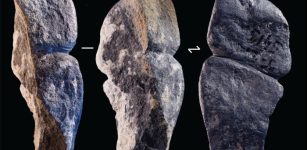 Oldest Carving Of A Penis Discovered On Ancient Mongolian Pendant
Archaeology | Jun 20, 2023
Oldest Carving Of A Penis Discovered On Ancient Mongolian Pendant
Archaeology | Jun 20, 2023 -
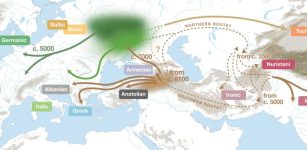 New Insights Into The Dawn Of The Indo-European Languages
Linguistic Discoveries | Jul 27, 2023
New Insights Into The Dawn Of The Indo-European Languages
Linguistic Discoveries | Jul 27, 2023 -
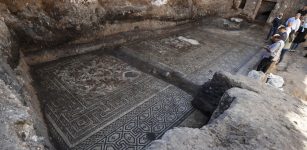 Rare Roman Mosaic Of Amazon Warriors Unearthed In Syria Hailed As Major Archaeological Discovery
Archaeology | Oct 12, 2022
Rare Roman Mosaic Of Amazon Warriors Unearthed In Syria Hailed As Major Archaeological Discovery
Archaeology | Oct 12, 2022 -
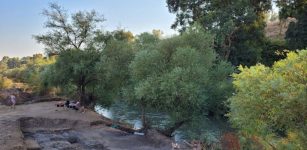 How Climate Change Contruibuted To The Transition From Nomadic Hunter-Gatherers To Settlement And Farming Societies
Archaeology | Nov 27, 2021
How Climate Change Contruibuted To The Transition From Nomadic Hunter-Gatherers To Settlement And Farming Societies
Archaeology | Nov 27, 2021 -
 Ilopango Volcanic Eruption In Maya World 1590 Years Ago – New Study
Archaeology | Oct 2, 2020
Ilopango Volcanic Eruption In Maya World 1590 Years Ago – New Study
Archaeology | Oct 2, 2020 -
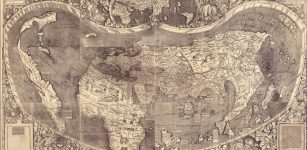 North America Is Named After An Italian Explorer
Ancient History Facts | Mar 1, 2016
North America Is Named After An Italian Explorer
Ancient History Facts | Mar 1, 2016 -
 Ancient Maya: Wealth Inequality And Despotism That Governed The Society
Archaeology | Mar 26, 2021
Ancient Maya: Wealth Inequality And Despotism That Governed The Society
Archaeology | Mar 26, 2021 -
 Sami People: Facts And History About The Only Indigenous People Of Most Northern Europe
Featured Stories | Sep 25, 2016
Sami People: Facts And History About The Only Indigenous People Of Most Northern Europe
Featured Stories | Sep 25, 2016 -
 On This Day In History: Napoleon Exiled To Elba – On Apr 11, 1814
News | Apr 11, 2016
On This Day In History: Napoleon Exiled To Elba – On Apr 11, 1814
News | Apr 11, 2016 -
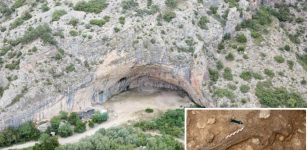 Rare Upper Paleolithic Human Remains Discovered In The Iberian Peninsula
Archaeology | Aug 12, 2021
Rare Upper Paleolithic Human Remains Discovered In The Iberian Peninsula
Archaeology | Aug 12, 2021 -
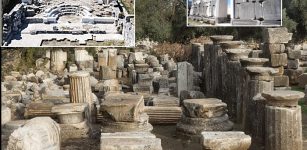 Restorations At Stratonicea Ancient City Of Gladiators In Turkish Muğla Province
Archaeology | May 10, 2023
Restorations At Stratonicea Ancient City Of Gladiators In Turkish Muğla Province
Archaeology | May 10, 2023 -
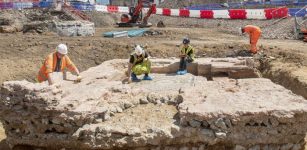 ‘Incredibly Rare’ Roman Tomb Unearthed Near London Bridge Station
Archaeology | Jun 13, 2023
‘Incredibly Rare’ Roman Tomb Unearthed Near London Bridge Station
Archaeology | Jun 13, 2023 -
 Can Peptide Droplets Explain The Emergence Of The First Living Organisms On Earth?
Archaeology | Oct 20, 2021
Can Peptide Droplets Explain The Emergence Of The First Living Organisms On Earth?
Archaeology | Oct 20, 2021





